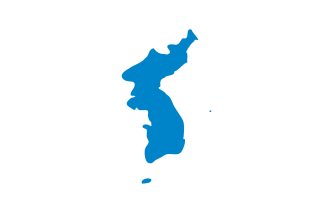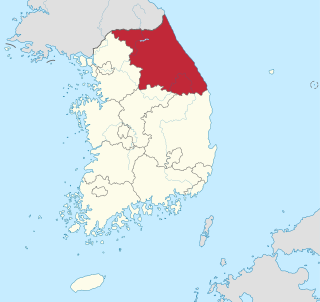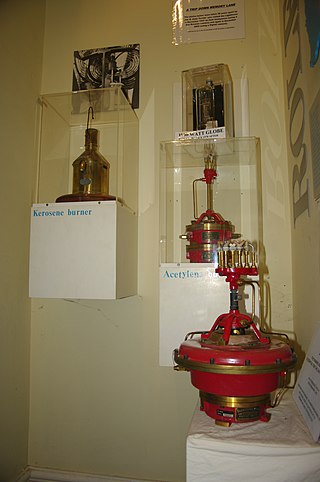There are over 500 museums and galleries in South Korea. [1]
There are over 500 museums and galleries in South Korea. [1]

Korea is a peninsular region in East Asia. Since 1945, it has been divided at or near the 38th parallel, now known as the Korean Demilitarized Zone. In 1948, two states declared independence, both claiming sovereignty over all of Korea: South Korea comprising its southern half and North Korea comprising its northern half. The region consists of the Korean Peninsula, Jeju Island, and a number of minor islands near the peninsula. The peninsula is bordered by China (Manchuria) to the north and Russia to the northeast, across the Amnok and Duman rivers. It is separated from Japan to the southeast by the Korea Strait.

Busan, officially Busan Metropolitan City, is South Korea's second most populous city after Seoul, with a population of over 3.4 million inhabitants as of 2017. Formerly romanized as Pusan, it is the economic, cultural and educational center of southeastern South Korea, with its port being South Korea's busiest and the sixth-busiest in the world. The surrounding "Southeastern Maritime Industrial Region" is South Korea's largest industrial area. The large volumes of port traffic and urban population in excess of 1 million make Busan a Large-Port metropolis using the Southampton System of Port-City classification.

Gangwon State is a province of South Korea and the least densely populated subdivision of the country. Gangwon is one of the two provinces with special self-governing status, the other being Jeju-do. On the east bound by the East Sea, it borders Gyeonggi Province to its west, North Gyeongsang Province and North Chungcheong Province to its south, and the Military Demarcation Line to the north, separating it from North Korea's Kangwŏn Province. Before the division of Korea in 1945 Gangwon and Kangwŏn Provinces formed a single province.

Gyeonggi Province is the most populous province in South Korea.

Ulsan, officially the Ulsan Metropolitan City, is South Korea's seventh-largest metropolitan city and the eighth-largest city overall, with a population of over 1.1 million inhabitants. It is located in the south-east of the country, neighboring Busan to the south and facing Gyeongju to the north.

Iksan is a city and major railway junction in North Jeolla Province, South Korea.
Buddhist temples are an important part of the Korean landscape. Most Korean temples have names ending in -sa, which means "monastery" in Sino-Korean. Many temples participate in the Templestay program, where visitors can experience Buddhist culture and even stay at the temple overnight.

Wonju is the most populous city in Gangwon Province, South Korea, with a population of 364,860 as of 2023. The city is located approximately 140 kilometres (87 mi) east of Seoul. During the time of Great Joseon, Wonju was the capital of the historic Gangwon Province, one of the Eight Provinces of Korea. It was the site of three crucial battles during the Korean War.

Namyangju is a city in Gyeonggi Province, South Korea. To the east is Gapyeong County, to the west is Guri City, and to the north is Pocheon City. Namyangju-si was originally a southern part of Yangju-gun, but was separated into Namyangju-gun in April 1980. In 1995, Migeum-si and Namyangju-gun were merged to form an urban and rural complex. The city hall is located in Geumgok-dong and Dasan-dong, and the administrative districts are 6-eup, 3-myeon, and 7-dong.

Andong is a city in South Korea, and the capital of North Gyeongsang Province. It is the largest city in the northern part of the province with a population of 167,821 as of October 2010. The Nakdong River flows through the city. Andong is a market centre for the surrounding agricultural areas.

A National Treasure (Korean: 국보) is a tangible treasure, artifact, site, or building which is recognized by the South Korean government as having exceptional artistic, cultural and historical value to the country. The title is one of the eight State-designated heritage classifications assigned by the administrator of the Cultural Heritage Administration (CHA) in accordance with the Cultural Heritage Protection Act after deliberation by the Cultural Heritage Committee.

Ewha Womans University is a private women's research university in Seoul, South Korea. It was originally founded as Ewha Haktang on May 31, 1886, by a missionary Mary F. Scranton. Currently, Ewha Womans University is one of the world's largest female educational institutes and one of the most prestigious universities in South Korea. Ewha Womans University graduated a number of South Korean women leaders, including politicians, CEOs, and legal professionals.

Tourism in South Korea refers to the tourist industry in the Republic of Korea. In 2012, 11.1 million foreign tourists visited South Korea, making it the 20th most visited country in the world, and the 5th most visited in Asia. Most non-Korean tourists come from other parts of East Asia such as Japan, mainland China, Taiwan, and Hong Kong. The recent popularity of Korean popular culture, often known as the "Korean Wave", in these countries has increased tourist arrivals. Seoul is the principal tourist destination for visitors; popular tourist destinations outside of Seoul include the major coastal city of Busan, the Seorak-san national park, the historic city of Gyeongju and subtropical Jeju Island. Traveling to North Korea is not normally possible without a special permission.

National Folk Museum of Korea (Korean: 국립민속박물관) is a national museum located on the grounds of Gyeongbokgung Palace in Jongno-gu, Seoul, South Korea. It uses replicas of historical objects to illustrate the history of traditional life of the Korean people.

A lighthouse museum is a museum specializing in the display of historical objects relating to lighthouses. These museums are either stand alone buildings or are present in lighthouses that are active or inactive. Objects displayed include tools lighthouse keepers used at the time in their everyday lives to maintain the light as well as historic objects such as the Fresnel lens. In addition to navigation, lighthouses in general continue to operate almost as "small maritime museums".
The Chojun Textile and Quilt Art Museum (Korean: 초전섬유퀼트박물관) is a textile museum located in Myeong-dong, Seoul, South Korea.
The Han Sang Soo Embroidery Museum is an art museum specializing in Korean embroidery located in Gahoe-dong, Jongno-gu, central of Seoul, South Korea. It was established by Han Sang Soo, who holds a title as a jasujang, a profession recognized as an Important Intangible Cultural Property by the Cultural Heritage Administration of South Korea.

Seoul, officially Seoul Special City, serves as the capital of South Korea, and is its most extensive urban center. The broader Seoul Capital Area, encompassing Gyeonggi province and Incheon metropolitan city, emerged as the world's fourth largest metropolitan economy in 2014, trailing only Tokyo, New York City, and Los Angeles, hosting more than half of South Korea's population. Although Seoul's population peaked at slightly over 10 million, it has gradually decreased since 2014, standing at approximately 9.97 million residents as of 2020. Seoul is the seat of the Korean government.
The International Council of Museums defines a museum as "a not-for-profit, permanent institution in the service of society that researches, collects, conserves, interprets and exhibits tangible and intangible heritage. Open to the public, accessible and inclusive, museums foster diversity and sustainability. They operate and communicate ethically, professionally and with the participation of communities, offering varied experiences for education, enjoyment, reflection and knowledge sharing.”